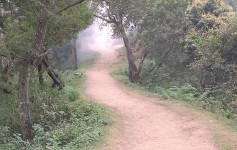Every time I think about getting back to work on my photography I run into a roadblock. First, I argued that I needed a new website; otherwise, I’d have no place to showcase my work. Well check that off the list. Second, I rationalized that I needed to finish up some old galleries I’ve been putting off (e.g. Czech, Rome, India) before I get to work on my new ones. But before that happens, I should hone my digital editing techniques. On second thought, digital editing means little if one’s original image isn’t of high quality. And you see where this is going…
One of my next goals (after uploading my finished galleries) is studying image file types. I want to know the differences between .png, .jpg, .RAW, and so forth. I want to ensure that images taken with my camera and subsequently edited digitally are done in such a way as to maximize their quality for the web, for printing, or for whatever. I am happy to solicit advice on the matter if anyone is actually reading this site, which I assume no one is. Thanks, diary.


Strangely I put some brainpower into this issue a few weeks ago. I work with paint.net for photos and self created images. PNG was the default format and I wondered if it was the new JPG. I found an article randomly on google that disucussed various formats. the general conclusion was that JPG takes much less space but maintains most all of the integrity of PNG’s. It may have been in the context of compressing images for pdf’s but that is my two cents on the issue.
Here’s what I pulled from my quick research, though I always welcome corrections. I work from the biggest files on down. First, there are RAW files which can be captured with digital cameras. These are gigantic, unmanipulated files which only the most hardcore photographers will want to deal with. Those at the next level down will want to use .tiff which has better compression and portability, but is also “lossless”.
The standard compression technology is .jpg. JPEGs are wonderful at compressing files with many colors to reasonable sizes, but the process is “lossy”, i.e. if you resave JPEGs over and over again, the image will continue to degrade each time as the compression is redone. TIFFs don’t suffer this fate, which is why attentive photographers like the standard.
PNG files, as I understand it, are best used when you have a limited number of colors and vector graphics. Line plots, graphs, and text, for example, don’t require many colors and the shapes are simple. This simplicity also means that the file sizes are considerably smaller than JPEGs. Trying to save files like these as JPEGs will introduce, for example, a line of gray pixels between pure white and black backgrounds. This seems to be why PNGs are so useful for web banners. Banners usually contain vector graphics, exist on the web which uses a more limited color pallet (than, say, Photoshop), and load more quickly.